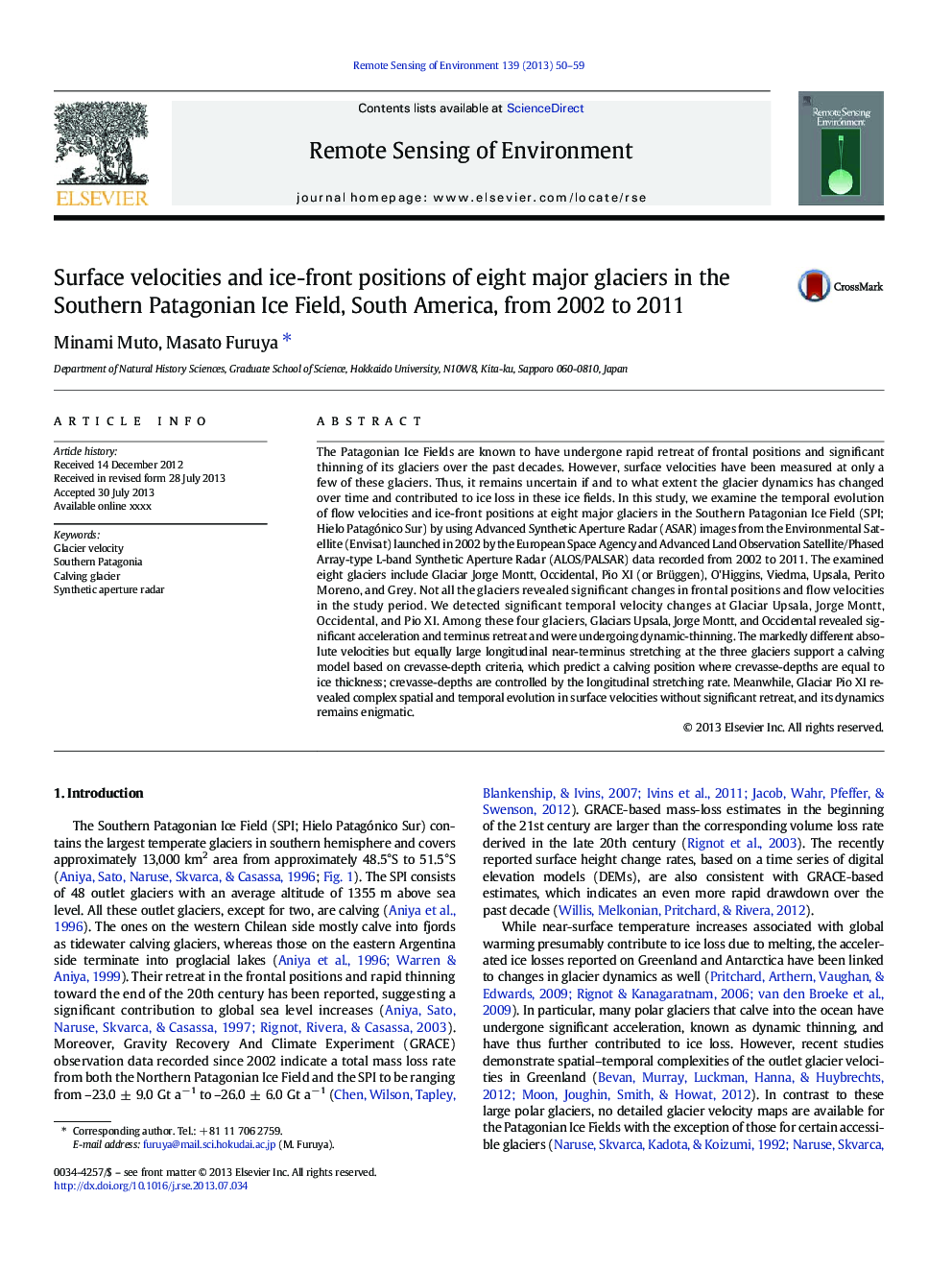| Article ID | Journal | Published Year | Pages | File Type |
|---|---|---|---|---|
| 6347117 | Remote Sensing of Environment | 2013 | 10 Pages |
Abstract
The Patagonian Ice Fields are known to have undergone rapid retreat of frontal positions and significant thinning of its glaciers over the past decades. However, surface velocities have been measured at only a few of these glaciers. Thus, it remains uncertain if and to what extent the glacier dynamics has changed over time and contributed to ice loss in these ice fields. In this study, we examine the temporal evolution of flow velocities and ice-front positions at eight major glaciers in the Southern Patagonian Ice Field (SPI; Hielo Patagónico Sur) by using Advanced Synthetic Aperture Radar (ASAR) images from the Environmental Satellite (Envisat) launched in 2002 by the European Space Agency and Advanced Land Observation Satellite/Phased Array-type L-band Synthetic Aperture Radar (ALOS/PALSAR) data recorded from 2002 to 2011. The examined eight glaciers include Glaciar Jorge Montt, Occidental, Pio XI (or Brüggen), O'Higgins, Viedma, Upsala, Perito Moreno, and Grey. Not all the glaciers revealed significant changes in frontal positions and flow velocities in the study period. We detected significant temporal velocity changes at Glaciar Upsala, Jorge Montt, Occidental, and Pio XI. Among these four glaciers, Glaciars Upsala, Jorge Montt, and Occidental revealed significant acceleration and terminus retreat and were undergoing dynamic-thinning. The markedly different absolute velocities but equally large longitudinal near-terminus stretching at the three glaciers support a calving model based on crevasse-depth criteria, which predict a calving position where crevasse-depths are equal to ice thickness; crevasse-depths are controlled by the longitudinal stretching rate. Meanwhile, Glaciar Pio XI revealed complex spatial and temporal evolution in surface velocities without significant retreat, and its dynamics remains enigmatic.
Related Topics
Physical Sciences and Engineering
Earth and Planetary Sciences
Computers in Earth Sciences
Authors
Minami Muto, Masato Furuya,
